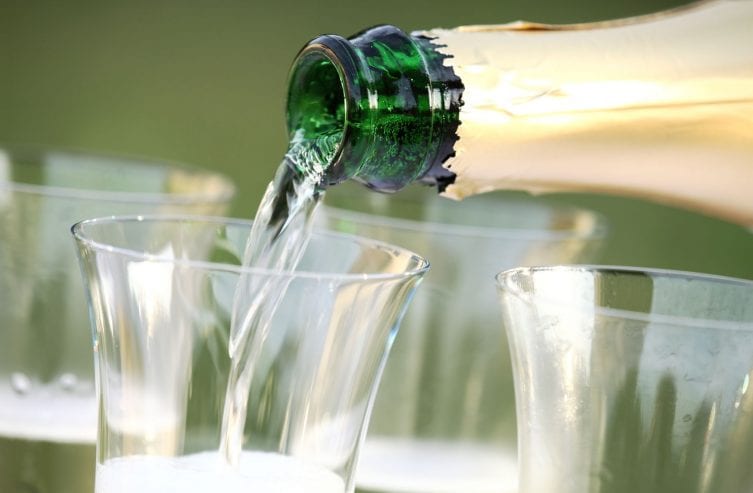1. Do not store too long
The best sparkling wines cannot be improved by storing them; rather, they taste best when they first leave the winery. As a general rule of thumb, a bottle of Champagne should be no more than a year old to be enjoyed at its best. And any bottles left over from last year’s party will have noticeably lost their fruit and finesse if served the following New Year!
2. Chill well
Sparkling wines and Champagne taste better if they have been chilled sufficiently before opening – ideally chilled overnight. As an alternative, a wine cooler with iced water can be used to achieve the optimum serving temperature relatively quickly but take note, chilling a premium wine rapidly tends to prevent its full finesse coming through. Also, the CO2 binding process is enhanced in bottles that have been chilled overnight.
3. Safety is key
Once you have removed the protective wire basket (‘agraffe’) from over the cork, you should always keep a thumb on the cork. Do not point the bottle at yourself or others while opening it as the pressure in a Champagne bottle can be four times as high as the air pressure in a car tyre, and the cork can shoot out of the bottle at up to 50 km/h! Facial and eyes injuries caused by unsafe opening of sparkling wine and Champagne bottles are far from rare!
4. Rotate the bottle
How can you recognise a pro opening a bottle? Most people tend to hold the bottle tight and turn the cork. A pro, on the other hand, holds the cork tight and turns the bottle – it gives better leverage.
5. Hold at an angle
Holding the bottle at an angle on opening increases the surface area of the wine in the bottle neck. Pressure can therefore be released with greater ease, minimising any fizzing up of the wine.
6. ‘Pfsst’ not ‘pop’
Even if it adds to the festive atmosphere, it’s best to avoid opening high-quality sparkling wines with a loud ‘pop’- instead, release the cork slowly so that you only hear a faint ‘pfsst’.
7. Tulips not saucers
Champagne saucer glasses, iconic of the 1960s Bond films, are really best suited to serving desserts. High-quality sparkling wines should always be drunk from fluted or, even better, tulip-shaped glasses.
8. Clean glasses
Limescale deposits and impurities inside glasses act as sites where the dissolved carbon dioxide aggregates, causing the wine to fizz up excessively and quickly become flat. Always ensure that your glasses are clean and polished.
9. Pour at an angle
Lift glasses and pour the sparkling wine or Champagne at an angle to reduce the loss of dissolved CO2, and to stop fizzing over.
10. Seal bottles
Opened bottles that you want to keep for the next day should be sealed and stored at as low a temperature as possible. If you do not have a special Champagne seal, use a standard wine cork. And be assured, the occasionally suggested ‘sealing’ of a bottle by placing a silver spoon in the bottle neck is completely useless!
Do you have any other tips that we can include in our list? Then write to us! Simply use the comment function below this post or start/join in discussions with us on Facebook.
